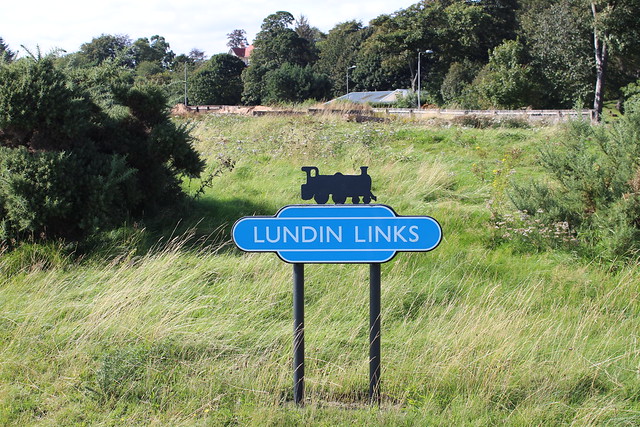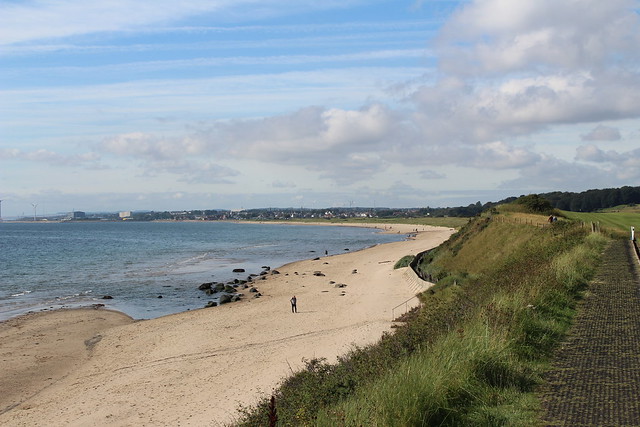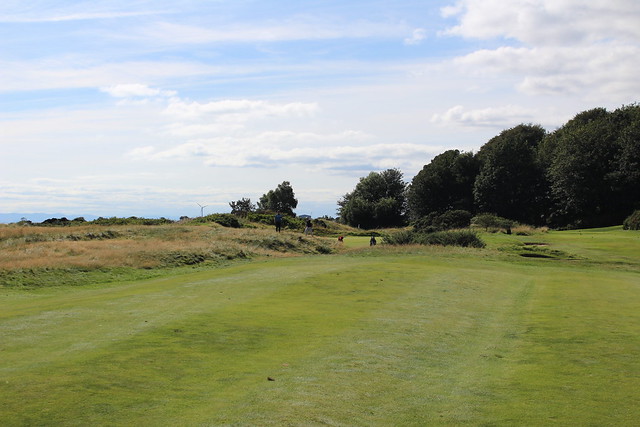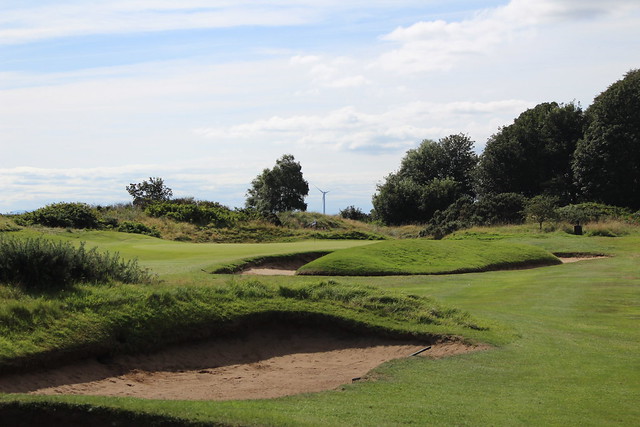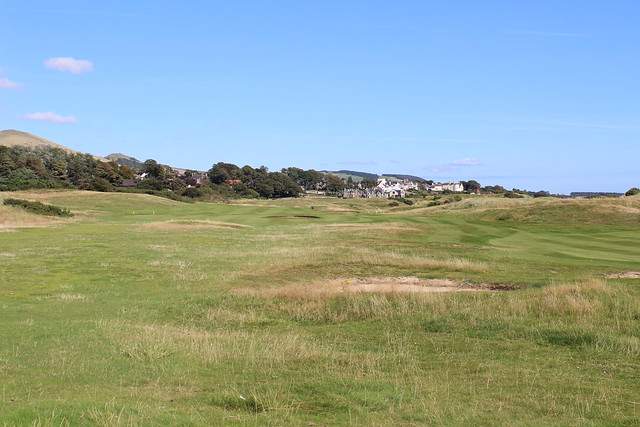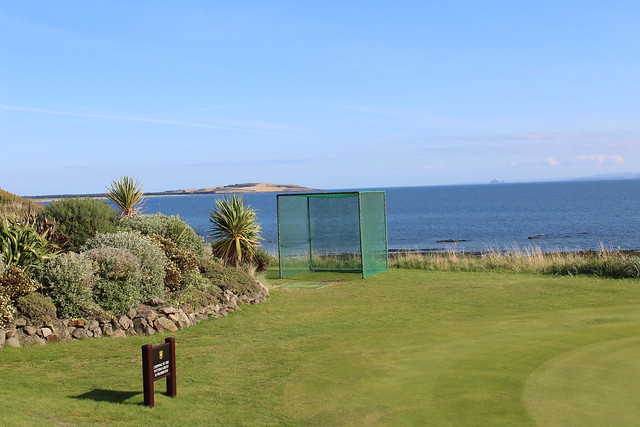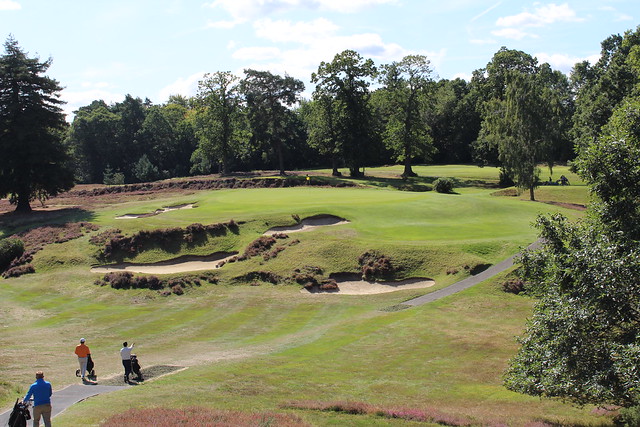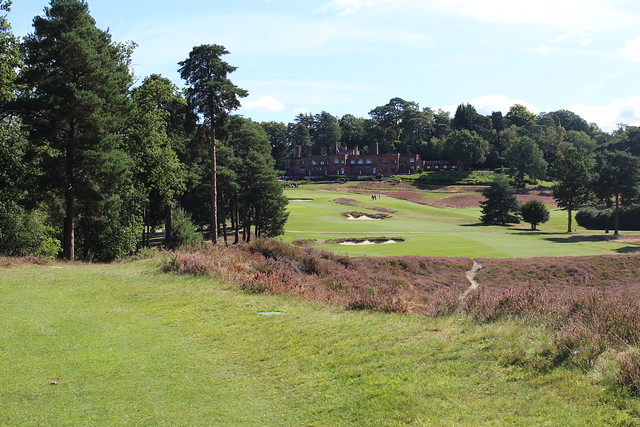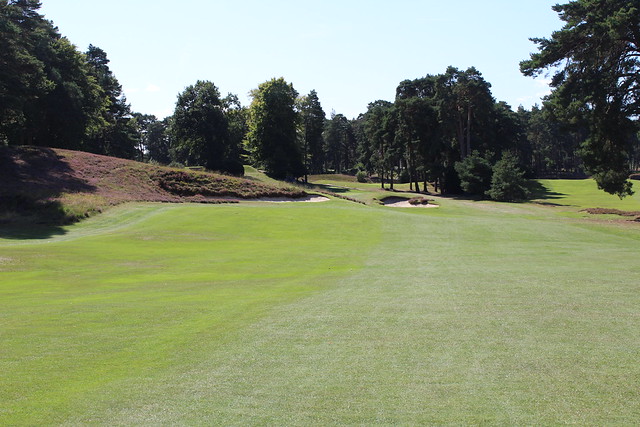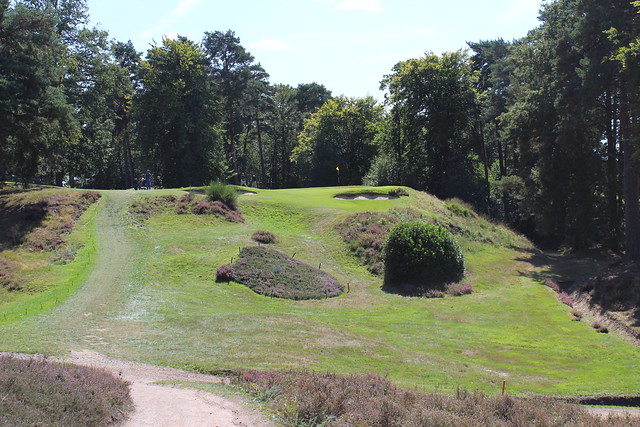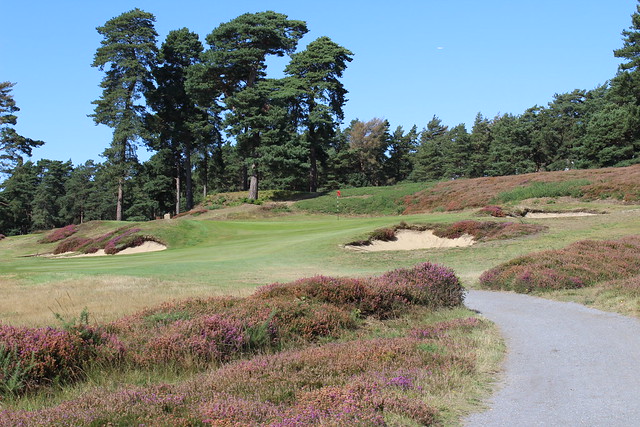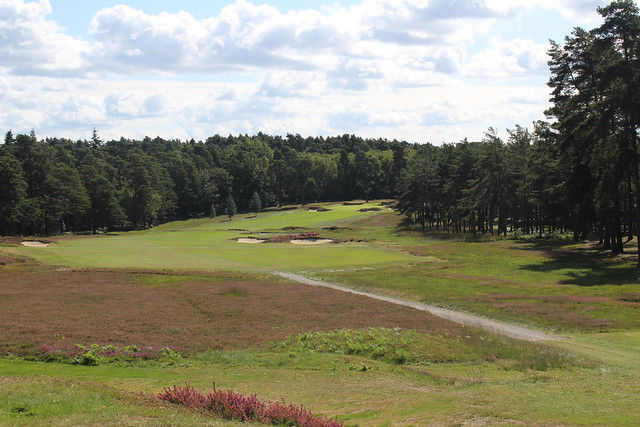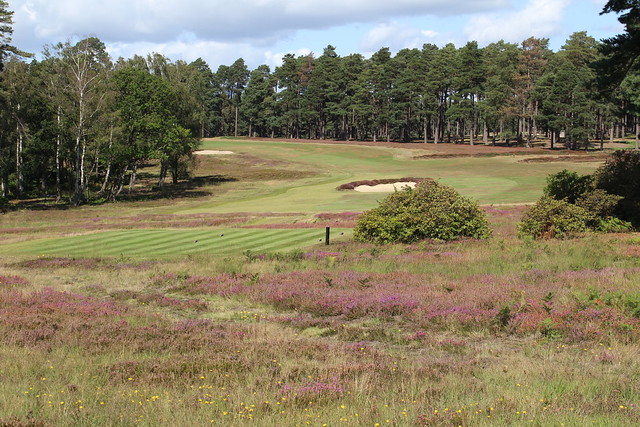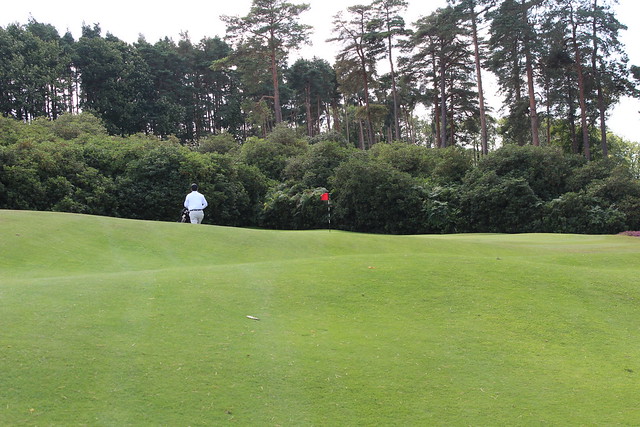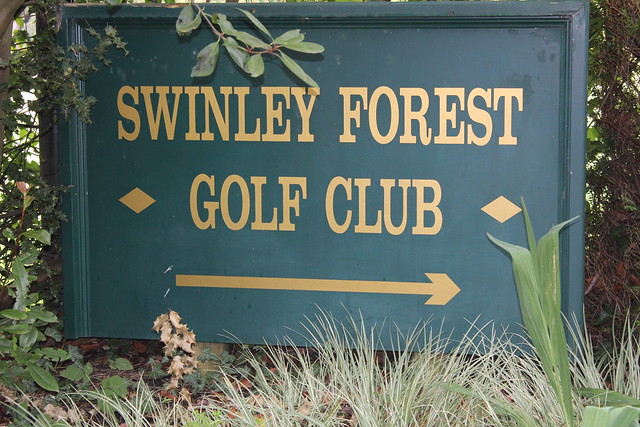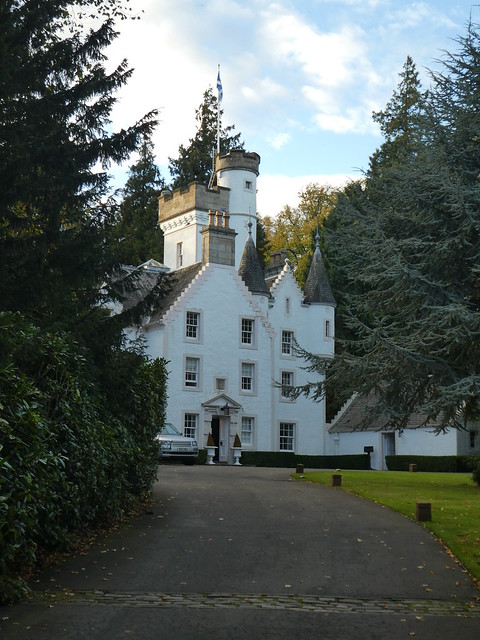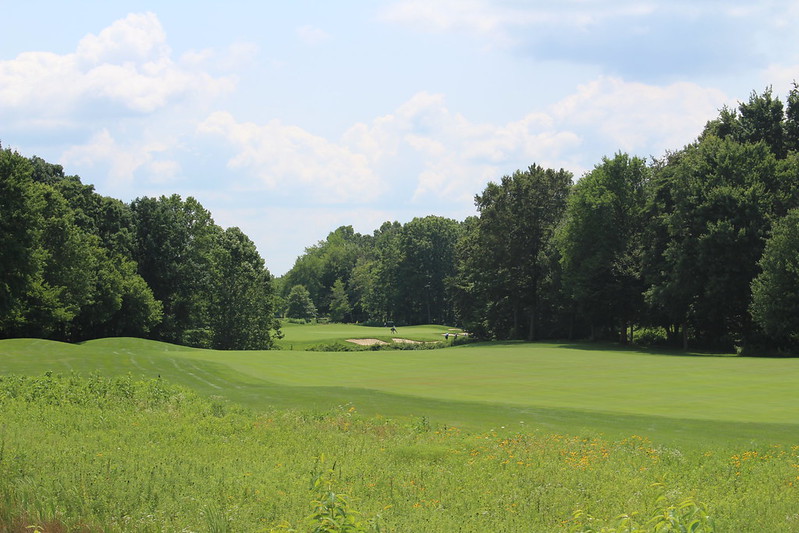Double Eagle’s fierce looking logo
I’m back to posting about new golf courses, having just completed one of my most satisfying rounds ever. The combination of being healthy enough to play, teeing it up at a captivating club, and doing so with friends, is a winning combination.
I still can’t fly, so “the wife” and I happily made the eight hour drive from New Jersey to Columbus, Ohio, for my first post-apocalypse outing to meet up with some fellow golf fanatics.
Two years ago those of us who completed playing the top 100 golf courses in the world decided it would be a good idea to get together occasionally to play, so we formed a club: the aristocratically named Global Golf Centurions Club. A handful of members were getting together and I was invited to join. My destination was the Double Eagle Golf Club. Double Eagle was not on the top 100 course list that I played, although for eight years it was ranked in the world top 100, with a peak ranking of 74 (note: statistics provided by the inimitable genius and MIT graduate
Paul Rudovsky).
I timed the trip perfectly, juggling infusions so that I had peak energy for the round. The weather also cooperated, it was in the high seventies with some light cloud cover, enough to allow the UV index to dip low enough so that someone who takes 22 pills a day to ward off bad things can go into the sun, albeit with long pants, long sleeves, two gloves, a big straw hat and SPF 50 (which has the viscosity of thick glue and dries looking like white paint) on the face. Visualize a ghost who is dressed like he’s going to appear on
Green Acres and that’s me when I play these days, but at this point in my journey I don’t need to worry about getting style points.
The Golf Course
Double Eagle is one of the most unique places I have played with its combination of optimum course conditioning, a noteworthy routing and exclusivity. There are not many members, and the course flies the below the radar. Our caddie told me that they usually have less than ten groups playing per day; if there were twenty total golfers on the course when we played it was a lot. The 340 acre property is also enchanting and feels like a wildlife sanctuary with broad expanses of wild flowers throughout.
The course plays 7,300 yards (6,500 from the members tees) and is eminently playable. The key design characteristics that stand out at Double Eagle are: 1) No two holes in the same direction; 2) The fact that approach shots to greens often have to carry over a ravine or swale or plantings/flowers; 3) The greens are usually elevated and have closely shaved areas around them, and; 4) The design forces you to have to think backward from the green to decide what kind of shot you have to hit. A lot of courses are said to be shot makers courses, but I found this to be a dominating factor to take into account while playing here. It did not seem to be a bomb and gouge layout because of the trouble in front of the greens. On more than a handful of holes you have to lay back and not hit with maximum power so that you position yourself with the correct club to the green, or so that you are not out of position on a dog-leg and block yourself out of the best approach.

The approach shot on the opening hole at Double Eagle
The first hole is indicative of the playing style at Double Eagle. It is a par 4 of 390 yards with an approach over a particularly deep swale.
Flowers near the 2nd tee shows off the pleasing setting of Double Eagle
The course setting is idyllic and it achieves a degree of isolation that only a handful of courses achieve, i.e., Pine Valley, Yeamans Hall, Morfontaine, and the nearby The Golf Club are notable examples. This type of real isolation is rarer than you think. Many great courses are not isolated, for example, San Francisco Golf Club, East Lake, and Los Angeles Country Club are within cities (or in the case of Pinehurst or North Berwick, within villages or towns) and the nearby urban environment is omnipresent when you play. Others have houses around them, like Wentworth and Winged Foot. Even some of the top of the heap tracks have roads running through them, like Merion, Maidstone, Shinnecock and Pebble Beach, even Cypress Point.
The approach to the par five second shows the elevated green with closely mown areas in front
The 475 par five, dog-leg second doesn’t have a low point or hollow on the approach to the green but it is elevated with shaved areas. Its challenge is a stream running through the midpoint of the hole, forcing the golfer to have to think through how far to hit both their first and second shots to make sure they don’t end up in the middle of the flora that surrounds it. There are also alternative fairways to choose off the tee, split by massive bunkers, adding to the strategic nature of the challenge.
View of the approach shot to the 3rd green at Double Eagle
The par four 3rd hole returns to the theme of a green protected by a ravine. I’ve probably played 200 or so courses that have ever been ranked among the top in the world. As I go about my travels I keep track of certain characteristics so I can compare them. One category I track is the best greens. To date I have only listed five on my website and in my book as having the best greens: Augusta, Winged Foot, Carnoustie, Peachtree and Camargo. The reality is that almost none of these top courses have bad greens, but these five stood out to me as being exceptional. Double Eagle’s greens, like the rest of the course, are impeccable, and I am adding them as the sixth course on my list. It was difficult to find grain on the greens and they rolled very true, although I found they almost always broke less than they looked like they would.
The 505-yard par five 6th hole looking back from the green, with a little stream guarding the approach against loose shots
The course was designed and built in 1992 by Ohio native Tom Weiskopf and his partner Jay Moorish. I am too young to have followed Weiskopf’s career but he sounds like a fierce competitor with a fiery temper, who played at the game’s highest level. He was a winner of 16 PGA tour events including the 1973 Open Championship at Troon. A steely combatant, three of his PGA tour wins were achieved by beating Jack Nicklaus by one stroke. Moorish apprenticed under Robert Trent Jones for four years and worked for Nicklaus Golf Design for ten. This dynamic duo had their peak year in 1992, designing Loch Lomond in Scotland (another course I love) the same year they designed Double Eagle. Their other noteworthy works are in Arizona: Troon North, TPC Scottsdale and Forest Highlands.
The tight approach to the 360 yard seventh hole, my favorite on the course, requires a precision shot, as does the drive to the small fairway
Tom Doak mentions in his
Confidential Guide that the bunkering style here is similar to San Francisco Golf Club and Riviera, although I didn’t notice that at all.
The 8th hole, a par 3 of 180 yards, shows the forced carry/ravine theme and the blissful setting
I found the course to have three distinct feels to it. The first eight holes are the most distinctive holes on the property and the ones I liked the most. This part of the property also has the most elevation change. Holes 9-14 play over a flatter part of the property, although they are still quite interesting. The final four holes bring water into play and represent a challenging finish. I personally liked the front nine more than the back.
Like at Loch Lomond, Weiskopf and Moorish maintain the design philosophy of continually changing direction. The course plays along every point on the compass and no two holes go in the same direction, an underrated principal in golf course design. One of the courses that Weiskopf admires and that influences his design is Muirfield, which, similarly, has great variation in hole directions.
The green on the challenging 15th hole shows the generally flatter nature of this part of the property
The 15th is a Cape-style par four of 440 yards, with a fairway that sweeps to the left, and the golfer has to decide on the tee how much of the lake to cut the corner on. Water also comes into play on the par three 16th as you shoot at a perched green, and greenside on 17 and 18.
Tom Weiskopf is credited with the introduction of the modern drivable par four into course design, and it is his signature. I do remember the split fairway 14th hole at Loch Lomond is a gem of a drivable par four. At first blush the 17th at Double Eagle doesn't seem drivable at 340 yards, but once you look at the nuances of the hole it becomes apparent that for a stud it's possible to land a ball on or near the green off the tee. The hole's defining obstacle is plain to see off the tee: three large trees splitting the fairway, with the more generous portion being on the left and a narrow sliver of fairway on the right. You have to decide if you want to go left or right of the trees from the tee, and if you go to the right, it’s only about 300 yards to the large green, although that choice brings into play the water that juts into the fairway near the green. The 17th gets several accolades from George Peper in his book the
World’s 500 Greatest Golf Holes, notching up rankings in the categories of ‘best short par four’ and ‘holes most nearly impossible to get on.’
Three mature specimen trees on the 17th provide quite a defense on a short par four
The 17th as seen from the green looking back, showing the split fairway, although there is water on the left short of the green isn’t visible in the picture
The challenging 18th, a par five finisher of 525 yards, is another example of how the course rewards precision over length, where just bombing a couple of shots is not the optimal way to play the hole.
The third shot to the 18th green needs to be played with exactness or you’ll be watching water splash as your ball sinks to the bottom
The Club
Our round was leisurely and idyllic, the only sounds were leaves rustling gently in the wind and birdsong. The combination of having a pristine golf course to ourselves during the height of the summer, with perfect temperatures and a light breeze is tough to beat. With respect to Mark Twain, this was not a good walk spoiled. It was a round to remember. As there was no one else remotely near us, we played a fivesome at a comfortable pace. In addition to the world-class golf course, the club also has one of the best vibes of any I have visited. It is a peaceful enclave from the outside world and a club you’d want to be a member of in a minute. There is no pomp and circumstance and it has a laid back feel. Getting the right ambiance (exclusivity without pretension, and a focus on golf and service) is a tricky thing that doesn’t happen that often, but when it does, you know it. I rank Double Eagle among a very select group of clubs that have the whole package and that make you truly feel like you are at home away from home. [San Francisco Golf Club, Maidstone, Somerset Hills, Myopia Hunt Club and Los Angeles Country Club being the others in the U.S.]
I was also fortunate to do an overnight stay in the lodge and it brought back fond memories of staying at dormie houses and club housing at other great clubs. There is nothing like it in my book because you don’t have to rush off anywhere and can immerse yourself in the experience. It is a joy to lose track of time and to stay up late into the night talking golf with likeminded nuts.
The fact that Double Eagle is not currently on Golf Magazine’s top 100 world list is a travesty, this course screams to be back in its appropriate place among the best; it is better than at least 20 courses I’ve played that are on the list. Serious golf fanatics should put Double Eagle on their bucket list of courses to play.
We all have our own thing that helps define us. My thing is traveling to play golf and enjoying not only great courses, but also the camaraderie and joy of a stag trip. Thank you to Mark, Paul, Mel, Tom and Keith for making my return to the golf world so special. It’s hard to articulate how good it was to get back into my routine and to re-enter the bubble! I can’t wait to do it again. Next up: a return to Myopia Hunt Club and the Country Club. Hopefully I can peak at the right time again and hope that the pros at both clubs aren’t scared off by the frightening look of my thick white sun-screened face and will let me play.
I would note that my opinion has evolved and that Ohio is a serious contender for the best golf state in the country. I have previously boasted about how great New Jersey is, anchored by the #1 course in the world. It’s also hard to make a case against California, and Long Island carries New York into final contention in any conversation. Collectively, though, the courses of Ohio are as good as any. Consider just those in the Columbus area: Muirfield Village, Double Eagle, The Golf Club and Scioto. Add on Camargo, Inverness, Canterbury, Kirtland, Moraine, NCR and Firestone, and if I were betting at poker I’d go All-in with that strong a hand.
The club has such an enjoyable culture because it was established in the benevolent dictator model followed at other unique courses. It was the brainchild of local boy John McConnell. If you thought steel magnates went away in the 19th century with the likes of Andrew Carnegie, think again. McConnell was a legitimate steel magnate, founding Columbus based Worthington Industries. A real-life Horatio Alger story, McConnell started out by borrowing $600 worth of steel using his 1952 Oldsmobile as collateral and built the business into a NYSE traded company, making himself wealthy along the way. God Bless America, the land of opportunity! His passions included golf, and he founded the club with the right attributes to be a special place to enjoy the game and the great outdoors.
McConnell has since passed away, but in my mind, he left a lasting legacy here on how to do things right. Like when Bobby Jones and Cliff Roberts set up the Masters, no detail was small enough to be overlooked. There is not one thing at Double Eagle that I can find fault with. That doesn’t happen often. McConnell set up a near perfect club that amplifies nature in a setting where golf is a true joy to play.
It’s good to be back!


